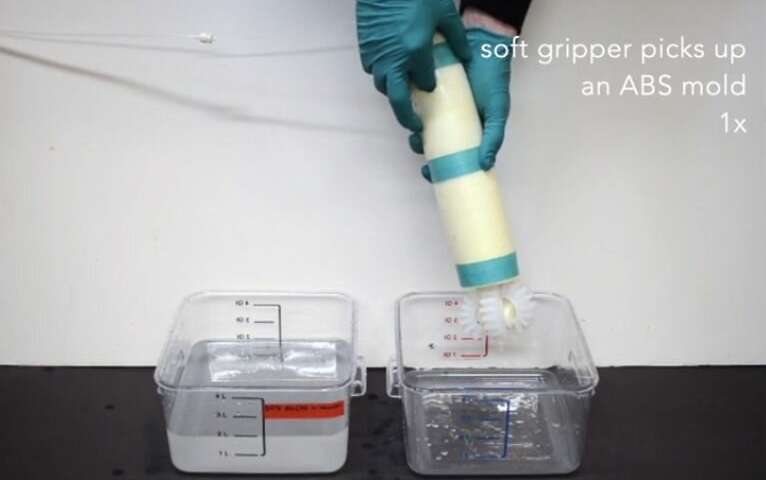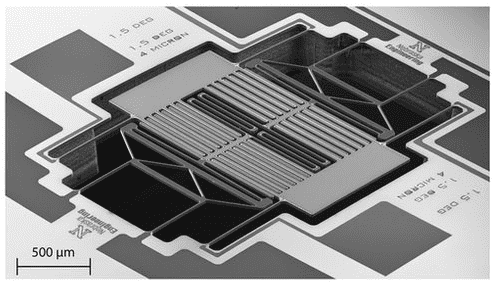In a carefully controlled environment, physicists have managed to stabilize a rare and previously short-lived phase of matter by using a simple method of rapid heating and cooling. This breakthrough could eventually lead to much faster, more efficient computers.
In the study published in Nature Physics, researchers from Northeastern University and Brown University describe how they used a method called thermal quenching to toggle the properties of a quantum material known as 1T-TaS₂, coaxing it into behaving like both an insulator and a conductor, depending on the temperature.
“Processors work in gigahertz right now. The speed of change that this would enable would allow you to go to terahertz,” said Alberto de la Torre, a physicist at Northeastern and the study’s lead author. That’s a leap of three orders of magnitude—potentially 1,000 times faster than today’s silicon-based computers.

One Material, Two Personalities
1T-TaS₂ is no stranger to transformation. At different temperatures, it flips through a series of ordered electron states, known as charge density waves (CDWs), that shape how it behaves. Some of these CDW states are metallic, allowing electrons to flow freely. Others are insulating, stopping the current cold. These phases are the material’s personality traits, and they determine whether it can process information like a semiconductor.
But there’s one particular phase that has haunted physicists for years: a so-called “hidden” metallic state, triggered only by a femtosecond laser pulse or voltage surge, and only stable for microseconds at extremely low temperatures. A femtosecond is one quadrillionth of a second. This state, elusive and short-lived, held promise, but scientists couldn’t yet tame it.
That’s what makes this study so remarkable. By heating the material and rapidly cooling it across a critical temperature threshold—like dunking molten glass into cold water—the researchers stabilized a new mixed phase where the hidden metallic state coexists with its insulating sibling. And it persists, as the researchers found switching the material into its mixed phase, it remained stable for months without reverting—something no previous method had achieved.
A New Phase of Matter At Practical Temperatures
To achieve this, the researchers carefully tuned the cooling rate. A fast “thermal quench”—dropping the temperature at around 120 K per second—was just right. If the cooling process was too slow, the material simply stayed in its usual insulating state and did not transition into the new mixed phase.
The quenching induced a mixed-charge-density wave state, confirmed using high-resolution X-ray diffraction at the Cornell High Energy Synchrotron Source. This hybrid phase exhibited distinctive patterns in both the arrangement of atoms and their electrical behavior. It featured mirror-image arrangements of electron patterns, further supporting its dual nature.
The most important detail was that the mixed phase was stable up to about -73 degrees Celsius (-100°F or 210 K). This is still very cold, but it’s much more accessible for engineering applications than previous attempts.
Transistors, the building blocks of modern electronics, rely on switching materials between insulating and conducting states. Today, these silicon based components are reaching their physical limits as engineers stack them tighter and denser than ever before.
“What we’re shooting for is the highest level of control over material properties,” Fiete said. “We want it to do something very fast, with a very certain outcome, because that’s the sort of thing that can then be exploited in a device.”
With this breakthrough, a single material could, in theory, act as both conductor and insulator—simplifying device architectures and unlocking speeds that silicon can’t reach.
And the mechanism for switching states (light) is already nature’s fastest messenger. “There’s nothing faster than light,” said Fiete. “And we’re using light to control material properties at essentially the fastest possible speed that’s allowed by physics.”

What Comes Next?
The researchers hope to build on their discovery by developing techniques to engineer and manipulate the domains in 1T-TaS₂ with even greater precision. “We’re at a point where, in order to get amazing enhancements in information storage or the speed of operation, we need a new paradigm,” Fiete said.
Quantum computing is one route. Another is mastering materials like this.
The study demonstrates that it’s possible to reconfigure the free-energy landscape of a quantum material using thermal control alone—without relying on intense lasers or extreme conditions. The researchers succeeded in stabilizing a material state that, until now, could only be accessed through brief and ultrafast experimental techniques.
Researchers have brought the hidden state into clearer view and it could one day help shape future electronics.






